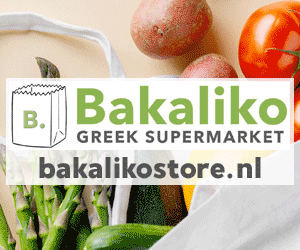
Currently two-thirds of the world’s flowers are exported out of the Netherlands, many of which are tulips. How did the Dutch generate such a large share of the world’s flower market?
The Origin of Tulips in the Netherlands
The origin of the tulip’s popularity can be traced back in the late 16th early 17th centuries. After the tulip was introduced to the Dutch from the Ottoman Empire in the mid-1500s, it became popular as it was found to tolerate the region’s harsh climate conditions. The Netherlands became a prime location for growers and sellers of the seeds and bulbs. Over time, the tulip became a luxury item to own and grow, its rarity and quality leading to increased demand. This demand for tulips benefited the Dutch East India Company, which at one point could generate a profit of 400% on the tulips alone.
Tulipmania to Market Crash
Toward the mid-17th century, the tulip became the Netherlands’ fourth largest export. It was around this time as well that greenhouses began to appear in the region, the early versions used to grow the valuable flowers all year round. During a subsequent market crash, the tulip lost much of its value but the years spent cultivating the flower left the country with a horticultural skill set that was repurposed for growing crops. It wasn’t until after World War II that the tulip started to see a rise in popularity, making it far more affordable for the average person. With this turn of events, farmers shifted back over to cultivating the flowers, and the Netherlands became a large worldwide exporter of tulips.
Tulips Grown Without Soil
Tulips can be cultivated using hydroponics, a method whereby plants are grown without soil in nutrient-enriched solution that does not require the use of chemicals. Growing the resilient tulip this way uses less heat and fewer resources, making it easier to produce every year and enabling growers to meet an increased demand for the flower. The tulip’s popularity has led the Dutch to have some of the largest greenhouses in the world, as they constantly seek ways of increasing the yield using the fewest amount of resources while at the same time minimizing the effect on the environment.
Greenhouses Also Supply 10% of Country’s Energy
The Dutch use these same greenhouse advances to grow crops and other plants. Growers use these growing methods to cross-breed and experiment with different flower breeds, a practice that sometimes results in new species which they export to the rest of the world. A total of 77% of all the world’s flower bulbs originate from the Netherlands. By current estimates, nine out of ten tulips are exported from the Netherlands. This massive flower market comprises roughly 10% of the Netherlands’ Gross Domestic Product (GDP). The greenhouses also double as solar power generators, providing energy to the surrounding area and supplying 10% of the country’s energy needs.
Today, Dutch company Florca Westland exports over 750,000 kg of flowers, plants, and accessories each year to more than 30 destinations around the world. Wholesale buyers, including florists such as Reids in Northern Ireland, import tulips for flower arrangements that they deliver locally and ship internationally.
Tulips Continue to Grow After Cutting
Tulips are unique in that they continue growing after being cut. They are considered the flower of Spring. The meaning and symbolism of the flower varies according to the color: yellow tulips convey cheerfulness while white one represent forgiveness. Tulips can be arranged with other flowers or bunched together in single or multi-color displays. A modern take on tulip presentation includes short-stemmed single-color arrangements in glass containers.
Increased Yield and Greater Sustainable Practices
With the tulip’s colorful history, it is not much of a surprise that the Dutch now manage to produce an astounding two billion annually. Each year, as they find ways to make the greenhouses more efficient, they set the bar higher. Dutch growers focus on horticulture production methods not just as a business, but as a sustainable practice that leaves less of an imprint on the surrounding area and as an environmental blueprint for a more energy-neutral society.
The tulip business continues to succeed while the industry advances innovation using the greenhouse’s energy production possibilities. With increased global tulip exports, the future includes a brighter our world filled with the flower’s colors and scents, and along with it, a growing contribution to an ever greater sustainable planet.
Source: www.urbangardensweb.com



